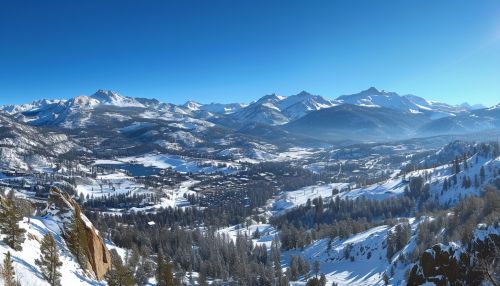1960 Winter Olympics
Overview
The 1960 Winter Olympics, officially known as the VIII Olympic Winter Games, were a winter multi-sport event held from February 18 to 28, 1960 in Squaw Valley, California, United States. This was the first Winter Olympics to be held in the Western United States, and the only Winter Olympics to be held in California to date. The games were awarded to Squaw Valley in 1955, beating out bids from Innsbruck, Austria and St. Moritz, Switzerland.


Preparation
The preparation for the 1960 Winter Olympics was a monumental task, as Squaw Valley was an undeveloped resort at the time of the bid. The entire infrastructure, including roads, hotels, and athletic facilities, had to be constructed from scratch. The main venue was the Blyth Arena, which housed the ice rink for figure skating and ice hockey, as well as the opening and closing ceremonies.
Participating Nations
A total of 30 nations sent athletes to compete in the 1960 Winter Olympics. South Africa made its Winter Olympics debut, and the United States, as the host nation, had the largest delegation with 79 athletes.
Sports
The 1960 Winter Olympics featured a total of 27 events in 4 sports. The sports included Alpine skiing, cross-country skiing, Nordic combined, and biathlon. The biathlon made its Olympic debut at these games.
Highlights
One of the most memorable moments of the 1960 Winter Olympics was the performance of the United States ice hockey team, which won its first gold medal in the sport. The team was composed of amateur and collegiate players and defeated the heavily favored Soviet Union and Canada teams.


Legacy
The 1960 Winter Olympics left a lasting legacy on Squaw Valley and the surrounding region. The infrastructure improvements made for the games led to the area becoming a major destination for winter sports enthusiasts. The games also had a significant impact on the Olympic movement, as they were the first to be widely televised, which greatly increased the global visibility of the Winter Olympics.
